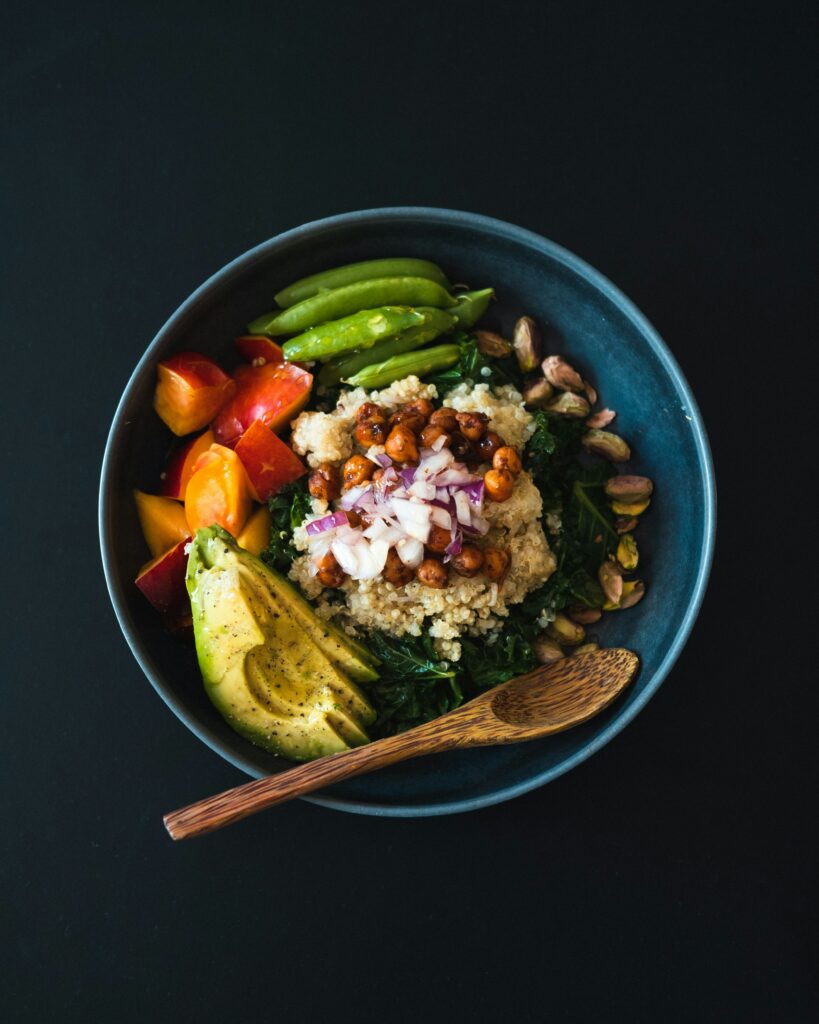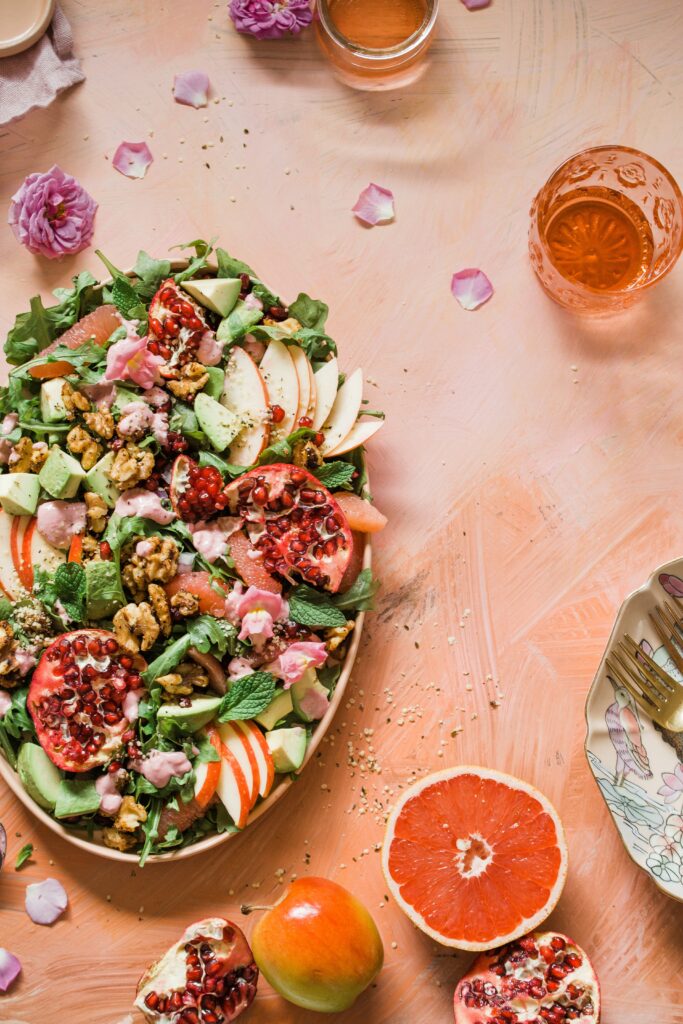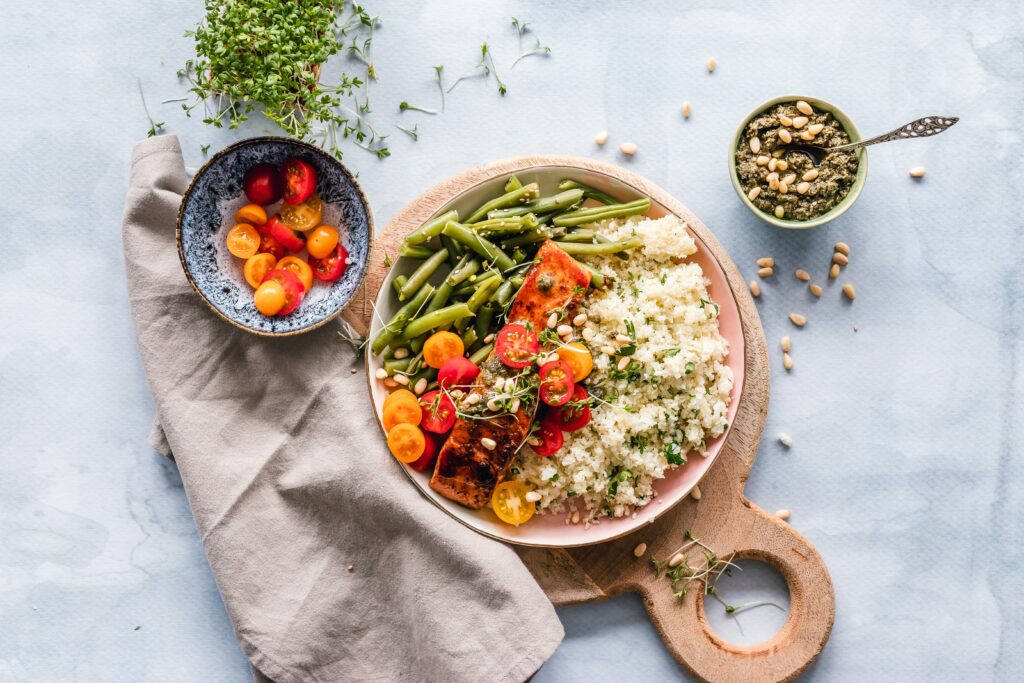One of the most universal pieces of nutrition advice? Eat your veggies! Of all the food groups, vegetables are incredibly nutrient-dense (and economical). They’re loaded with vitamins, minerals, and fiber. They also help prevent a slew of diseases and have a positive effect on blood sugar. Although all produce contains essential nutrients, each vegetable has a unique nutritional composition. For example, some veggies have more starch than others. In fact, we can divide vegetables into two categories: starchy and non-starchy. We need both to thrive, but today’s focus is on the latter. Learn why you should eat non-starchy vegetables for better digestion and a balanced, healthy body.

WHAT IS STARCH?
Starch is a natural component of most plants. This includes fruits, vegetables, and grains. When it comes to a balanced diet, starchy foods are our main source of carbohydrate. A few examples: rice, sweet potatoes, pasta, beets, and corn. Starches are often referred to as a complex carb, as they’re made up of a number of joined sugar molecules. Starchy foods are a great source of energy, calcium, iron, B vitamins, and fiber. Most starches are digested slowly and supply a more steady release of glucose into the blood stream (this is helpful for regulating hunger, hormones, and more).

NON-STARCHY VS. STARCHY VEGETABLES
As mentioned, all vegetables contain some starch. However, produce with relatively small amounts of starch are considered non-starchy vegetables. Think: leafy greens, mushrooms, asparagus, tomatoes, and onions. Non-starchy vegetables have more fiber than their starchy counterparts, but both types are nutrient-dense. When possible, aim for at least half a plate of non-starchy vegetables. These are very blood sugar-friendly and won’t cause an energy crash. Despite their low calorie content, non-starchy vegetables are high in essential vitamins, minerals, and fiber.
FIBER IS YOUR FRIEND
Speaking of fiber, what is it? Fiber is a type of carbohydrate. It includes a broad spectrum of plant-based compounds that the body can’t digest. While most carbohydrates are broken down into sugar molecules, fiber is an outlier. Instead, fiber passes through the body undigested—which is precisely why it’s so important. Fiber helps minimize constipation, regulates hunger cues, keeps blood sugar in check, slows glucose absorption, promotes heart health, and more. Non-starchy vegetables have more fiber than starchy vegetables.
See here for a helpful list of high-fiber foods.

How Veggies help with digstion
To dig into this a bit further, how do veggies—non-starchy veggies, specifically—help with digestion? As mentioned, they’re high in fiber. This fiber adds bulk to your stools, aiding in regular bowel movements and preventing constipation. Additionally, they’re high in water. This water content helps keep your digestive tract hydrated, facilitating smooth movement of food through the intestines. Furthermore, non-starchy vegetables contain phytonutrients and antioxidants that promote gut health. In turn, these micronutrients support the growth of beneficial bacteria in the gut microbiome. And this aids in nutrient absorption and overall digestive function. Aim to eat 2-3 cups of non-starchy veggies per day!

LIST OF non-starchy VEGETABLES
When it comes to eating non-starchy vegetables, the sky’s the limit. You have many options to choose from! Here’s a helpful list of non-starchy vegetables to get started:
- Artichokes
- Arugula
- Asparagus
- Bamboo shoots
- Bok choy
- Brussels sprouts
- Broccoli
- Cabbage
- Carrots
- Cauliflower
- Celery
- Chicory
- Collard greens
- Cucumbers
- Daikon
- Dandelion greens
- Eggplant
- Endive
- Hearts of palm
- Iceberg lettuce
- Jicama
- Kale
- Leafy greens
- Leeks
- Mushrooms
- Okra
- Onions
- Peppers (all green types)
- Radishes
- Scallions
- Spaghetti squash
- Sugar snap peas
- Summer squash
- Swiss chard
- Tomatoes
- Watercress
- Zucchini

5 WAYS TO EAT ORGANIC VEGETABLES ON A BUDGET
There are a variety of ways to eat non-starchy vegetables and stick to your budget. Contrary to popular belief, it is possible to keep your grocery bill low while still fueling your family with nutrient-dense, organic food. Ultimately, it comes down to planning, comparing options, and knowing what’s the best bang for your nutritional buck.
1. MEAL PLAN
Planning your meals can help you avoid buying packaged items you don’t need or fresh veggies that might go bad. Meal planning also helps you avoid eating out on a regular basis. Find a couple of recipes to make, check your pantry to see what you already have on hand, then make your grocery list. By planning, you’ll spend less money and waste less food. Furthermore, one of the simplest ways to eat healthier on a budget is by cooking meals at home often. Frequently eating at home is associated with a greater intake of nutritious foods, including fruits and vegetables.
2. GO MEATLESS
Protein is an essential macronutrient for several functions within the body—muscle growth, tissue repair, hormone regulation, and more. Protein-packed foods also help keep you satiated (full) longer than carbohydrates or fats. However, over the past several years, the price of meat has steadily increased. When it comes to how to create healthy meals on a budget, consider incorporating meatless meals into your weekly meal plan. There are many non-meat protein foods that can make a good low-cost swap for animal proteins, including:
- Organic eggs
- Legumes (beans, lentils, peas)
- High-quality dairy products (cottage cheese, Greek yogurt, kefir)
- Nuts and seeds (almonds, walnuts, pumpkin seeds, pecans, etc.)
- Non-GMO soy products (e.g., edamame, tempeh, tofu)
3. COMPARE OPTIONS
Between e-commerce stores like Thrive Market and Brandless, to discounted organic produce, like Misfits Market, it’s always helpful to spend a few minutes comparing prices. You can also sign up for grocery store apps (like Sprouts) to see what’s on sale. By doing a bit of homework, you can stay within your budget. Another way to compare is by thinking about serving size! Last but not least, Budget Bytes has a ton of tips, tricks, and economical recipes.
4. BUY IN BULK
Buying foods in larger package sizes—“in bulk” (or family size)—is often the way to get the lowest unit price. If you haven’t checked the unit price when buying groceries, now is the time. You should see it listed near the item’s price. Let’s say one bag of potatoes costs $4.99 and the unit price is $0.50. A larger bag of potatoes might be $6.99, but its unit price is $0.27. In other words, the larger bag is the way to go. Some of the cheapest ingredients to buy in bulk are beans, rice, frozen vegetables, and bananas.
5. SHOP THE FROZEN SECTION
Typically just as nutritious as their fresh counterparts, frozen fruits and veggies are less expensive and available year-round. Picked and packaged at their height of ripeness, freezing seals in nutrients (and flavor). With the shelf life being much longer, you can prolong the frozen fruit or veggie’s use. Frozen produce is usually sold in large bags, allowing you to use only what you need and keep the rest in your freezer. When it comes to fresh fruits and vegetables, buy what’s in season! There is more supply available, resulting in lower prices. Keep in mind that seasonal produce will vary by growing conditions and weather. Ask your grocer or check out your local farmers market.

This article is for informational purposes only. It is not, nor is it intended to be, a substitute for professional medical advice, diagnosis, or treatment and we recommend that you always consult with your healthcare provider.



Leave a Reply